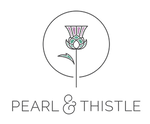
Emotional Sensitivity in the Luteal Phase
May 23, 2025
Is there a Catholic prohibition against girls using tampons?
September 12, 2025What is an NFP "Method?"
I was recently chatting with a dear friend of mine, who admitted she's been a little unsure of her NFP charts lately. I don't make it a habit to pry into my friends' NFP habits in general, but when they bring it up I take it as an invitation to offer some help. 😅
So I asked her, "Okay, well what method are you using?"
She sort of stared at me blankly and said, "What do you mean 'method'?"
I shouldn't have been surprised, because I often find that smart, motivated women and couples are able to piece together a fairly good set of "rules" to guide their charting and practice of NFP. But I also know that the trade off for a self-assembled charting approach is that the "Smith Family Method" often comes with its own complications.
- ✅ Biomarker categories can get confused (e.g., mixing Creighton terminology with Billings-style observation techniques)
- ✅ Temperature rules are inconsistent (e.g., only counting three high temps with a calculation designed for 4 high temps)
- ✅ Start of fertility algorithms are missing key data points
- ✅ End of fertility calculations don't take into account morning of vs. evening vs. morning after distinctions
- ✅ You don't have anyone checking your comprehension of the rules, so you don't know what you've misunderstood
Can self-teaching work? Sure! I'm not so conceited or jealous within my own profession that I think absolutely everyone has to have an NFP instructor at all times. I have worked with couples who successfully used a rhythm method app to help them plan their family for over a decade (altho, they didn't realize it was ye olde rhythm method because it seemed so "hi tech").
BUT
If you have run into frustrations or confusion with your charts, especially if you're going through any sort of transition or fertility difficulties, then I do recommend working with a trained professional in an actual METHOD.
Because a "method" of NFP will have internal coherence between the biomarkers you chart, the way you interpret those biomarkers for fertility and infertility, proper ways to adapt charting for particular situations, and the training specialty of the instructor.
I know a lot about cervical fluid. But I cannot decipher a Creighton chart with anything nearing the skill of someone who is trained to interpret a Creighton chart.
The inevitable follow-up question, though, is:
How do I choose which method to learn?
And here is one hill I will die on: there are probably a lot of different methods that will work for any given person. I don't believe it's the case that there is ONE method that is always the best, either in the communal sense (i.e., ONE METHOD TO RULE THEM ALL) or the personal sense (i.e., THE ONLY METHOD THAT WILL WORK FOR US).
I typically find that within certain lifestyle parameters and preferences, it's less important to choose "the right method" and more important to invest in working with "the right instructor": that is, someone who YOU communicate easily and confidently with, and who has the expertise to help you navigate your situation.
But you do have to start somewhere. And getting a general idea of what each method offers is a fantastic start.
So I'm really excited that my friends, Emily Frase and Mary Bruno, have officially launched their Method Comparison page at FAbMbase.org! 🎉🎉🎉
On one webpage you can find an explanation of methods, compare options with biomarkers, and gain some insight into whether a method "sounds" like a good fit for you!
I'd highly encourage you to check it out, and share it with any of your friends who may ask you: "What is an 'NFP method'?"





